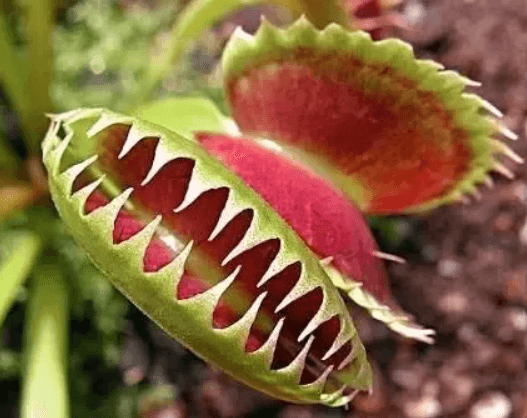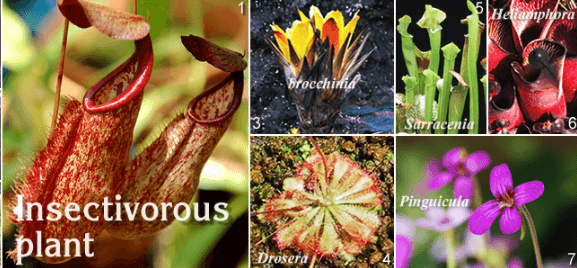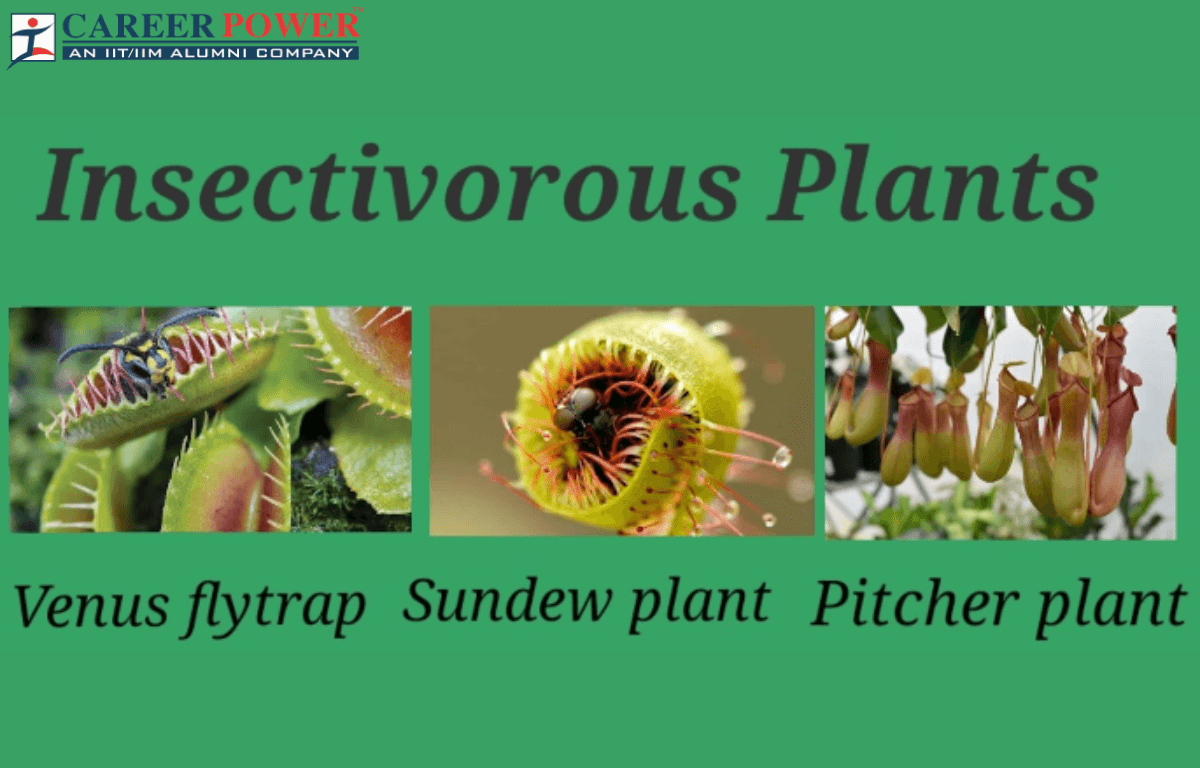As we all know living organisms that belong to the kingdom Plantae, and plants are a very important topic of biology. They encompass a diverse group of species, ranging from tiny mosses to towering trees. Plants are essential for life on Earth as they perform photosynthesis, converting sunlight into energy and producing oxygen. They provide food, shelter, and numerous resources for humans and other animals. Here we have briefly discussed insectivorous plants.
Definition of Insectivorous Plants
Insectivorous plants are fascinating organisms that have evolved to capture and digest insects and other small prey as a supplementary source of nutrients. Insectivorous plants are typically grown in nutrient-poor environments, such as bogs and wetlands, where they have adapted to supplement their diet with insects to thrive. Some examples of insectivorous plants are Venus flytrap (Dionaea muscipula), Pitcher plants (Various genera), Sundew (Drosera spp.), Butterwort (Oenguicula spp.), Bladderworts (Ultricularia spp.).

How are Insectivorous Plants Different from Other Plants?
Insectivorous plants, such as Venus flytraps and Pitcher plants, are different from other plants primarily in their unique adaptations for capturing and digesting insects. Insectivorous plants evolved distinct features to thrive in specific ecological niches with nutrient limitations, making them quite different from most other plants that rely on other plants that rely on more conventional methods of nutrient acquisition from the soil.
- Feeding Mechanism: Insectivorous plants have specialized structures, like sticky leaves or traps, that enable them to capture insects. They actively attract, catch, and digest insects as a source of nutrients. Most other plants obtain nutrients from the soil through their roots.
- Modified Leaves: Insectivorous plants often have modified leaves that act as traps. For example, the Venus flytrap has hinged leaves with sensitive trigger hairs, while pitcher plants have a tubular leaf structure that collects rainwater and insects.
- Digestive Enzymes: These plants produce digestive enzymes to break down the insects they capture, allowing them to absorb essential nutrients like nitrogen and phosphorus. Typical plants don’t possess such digestive capabilities.
- Nutritional Adaptations: Insectivorous plants have evolved these mechanisms as an adaptation to nutrient-poor environments, such as acidic bogs or nutrient-deficient soils. They supplement their nutrient intake by catching insects.
- Photosynthesis: Insectivorous plants still perform photosynthesis like other plants, using sunlight to produce energy from carbon dioxide and water. However, they rely on insects for additional nutrients that may be lacking in their habitat.
Examples of Insectivorous Plants
These diverse examples of insectivorous plants showcase the various ways in which they have adapted to creatures and consume insects and other small organisms as a source of nutrients in their nutrient-deficient habitats.

- Cobra Plant (Darlingtonia californica): Native to North America, the cobra plant has tubular leaves with a hood-like structure that resembles a striking cobra. Insects are lured into the hood and are unable to escape, eventually falling into the plant’s liquid-filled pitcher where they are digested.
- Venus Flytrap (Dionaea muscipula): This plant has specialized leaves with hinged traps that snap shut when triggered by an insect. Digestive enzymes then break down the prey for nutrient absorption.
- Pitcher Plants (Nepenthes and Sarracenia): These plants have pitcher-shaped leaves that contain a liquid digestive fluid. Insects are lured into the pitcher by nectar, and once inside, they drown and are digested by the plant.
- Sundew (Drosera): Sundews have sticky glandular hairs on their leaves that trap insects. Once an insect lands on a leaf, it becomes stuck, and the plant’s enzymes digest the prey.
- Waterwheel Plant (Aldrovanda vesiculosa): This aquatic plant floats on the surface of still water bodies. It has snap traps similar to the Venus flytrap but is adapted for underwater hunting. It captures small aquatic small aquatic organisms like tiny aquatic invertebrates.
- Rainbow Plants (Byblis spp.): These Australian plants have long, slender leaves covered in sticky glandular hairs. Insects are attracted to the glistening droplets on the leaves and become trapped before being digested.
- Corkscrew Plant (Genlisea spp.): Corkscrew plants are aquatic or semi-aquatic and have underground traps resembling tiny corkscrews. They capture and digest small aquatic prey, such as protozoa and small insects.
- Brocchinia (Brocchinia spp.): These insectivorous plants are native to South America and have specialized pitchers filled with digestive enzymes. They primarily capture insects, but some species are also known to catch larger prey like frogs.
Characteristics of Insectivorous Plants
Insectivorous plants, also known as carnivorous plants, have several distinctive characteristics. These unique characteristics enable insectivorous plants to thrive in environments where other plants struggle to obtain essential nutrients.
- Modified Leaves: Insectivorous plants have leaves that are adapted to trap and digest insects. These leaves often have specialized structures like hairs, glands, or pitfall traps.
- Insect Attraction: They attract insects through various means, including nectar, scent, and coloration, luring them into their traps.
- Trapping Mechanisms: Different species employ various trapping mechanisms, such as snap traps (Venus flytrap), sticky traps (Sundews), and pitcher traps (Pitcher plants).
- Digestive Enzymes: Insectivorous plants produce digestive enzymes that break down the captured insects, allowing them to absorb nutrients like nitrogen and phosphorous.
- Nutrient Acquisition: These plants primarily use captured insects to supplement their nutrient intake, as they often grow in nutrient-poor soils.
- Conservation Concerns: Many insectivorous plant species are threatened or endangered due to habitat loss and collection by enthusiasts.
- Ecological Role: Insectivorous plants play a role in controlling insect populations and can influence the composition of their ecosystems.
- Reduced Leaf Size: Some insectivorous plants have reduced leaf size for energy conservation, as they derive energy from captured insects rather than photosynthesis.



 50 Vegetables Name for Kids in English a...
50 Vegetables Name for Kids in English a...
 Food Chain: Definition, Types, Examples,...
Food Chain: Definition, Types, Examples,...
 Human Respiratory System: Definition, Di...
Human Respiratory System: Definition, Di...













